Combining Academia and Lake Associations: Monitoring Lake Lillinonah
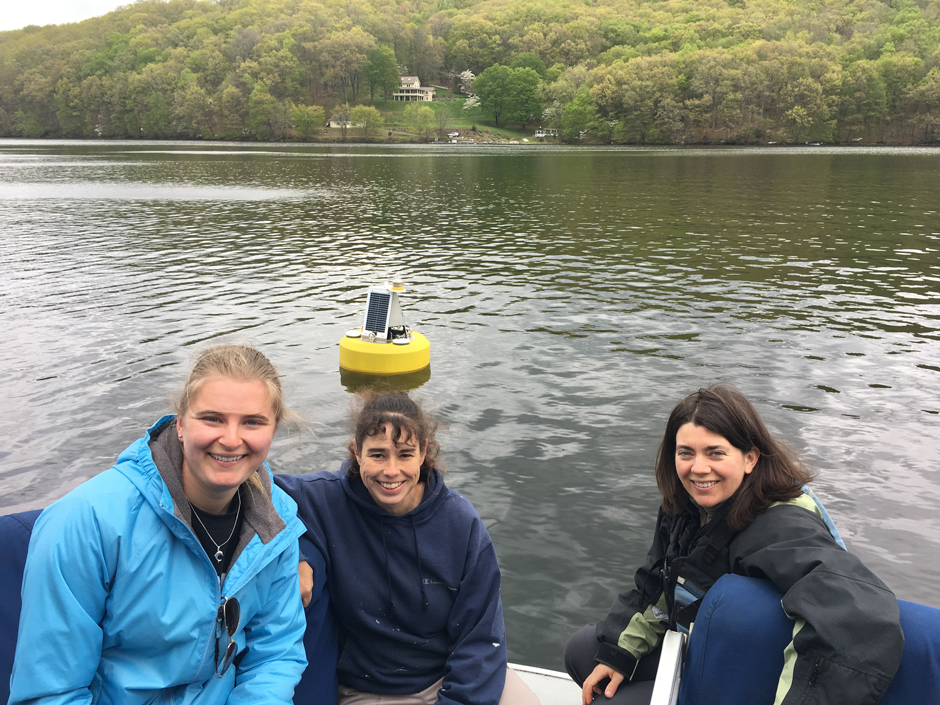 FOTL members Kendra Kilson, Rebekah White, and Fairfield University professor Jen Klug pose with the buoy. (Credit: Greg Bollard/Friends of the Lake)
FOTL members Kendra Kilson, Rebekah White, and Fairfield University professor Jen Klug pose with the buoy. (Credit: Greg Bollard/Friends of the Lake)Lake Lillinonah may be Connecticut’s second-largest lake, but it holds a great deal of meaning for locals and researchers in the surrounding towns. The lake is so significant to the surrounding community that it is one of many lakes in the United States with a dedicated lake association advocating for the resource.
Jen Klug, Professor of Biology in the College of Arts and Sciences at Fairfield University, started her career at Fairfield as a natural progression in her background as a classical aquatic ecologist and found herself working closely with Lake Lillinonah’s Friends of the Lake (FOTL) when they reached out to collaborate on an algae presentation for a public forum back in 2006.
“When I moved to Connecticut to take the job here at Fairfield, I encountered lakes that were much more impacted by human activity—and so I started to get more interested in applied questions,” begins Klug.
After the forum, Klug and FOTL began working more closely together, combining research and outreach through inter-agency collaboration. She continues, “It’s hard to separate my work from their work—it’s a very tight partnership.”
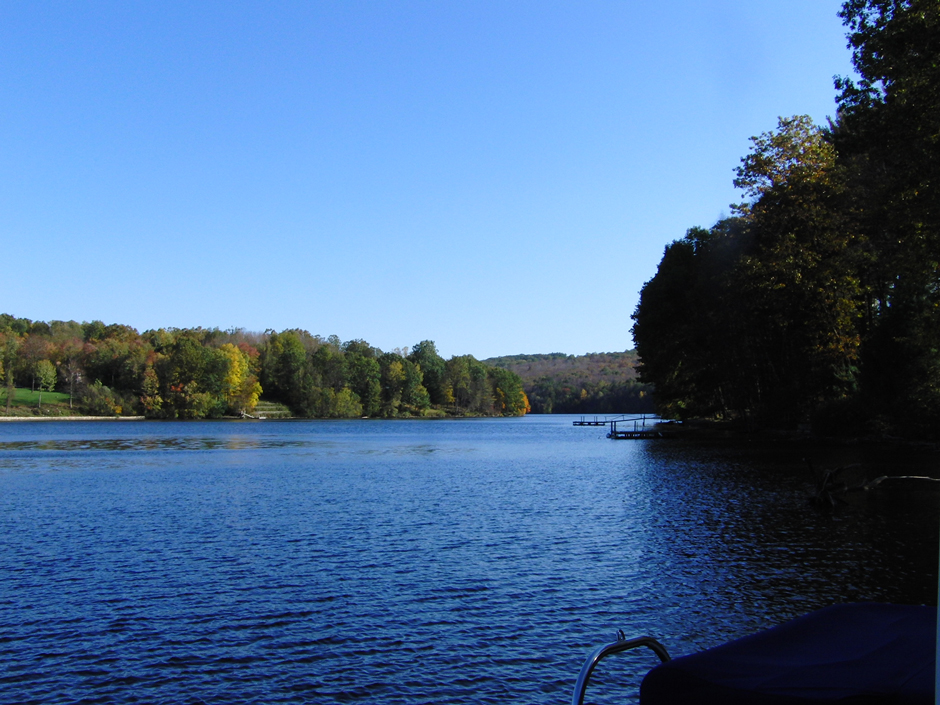
Views from the shoreline of Lake Lillinonah. (Credit: Courtesy of Friends of the Lake)
Collaborating for Lake Lillinonah Monitoring
While technically working for different groups, Klug and FOTL share a common mission of protecting Lake Lillinonah and improving water quality. The lake desperately needs advocates like Rebekah White and Greg Bollard, two members of FOTL who joined the organization in order to fill that need.
White explains, “I am part of Friends of the Lake because I believe in being a contributor to my community. I am a resident of the lake and wanted to learn more about the lake to ensure I was doing my part to protect it.”
“Many years ago, we realized that Lake Lillinonah had no voice or representation, nor did it have any sense of community among users and residents. FOTL was created to help build a platform and become ambassadors for the lake,” adds Bollard, one of the founding members of the organization.
“[FOTL] gave me a chance to get to know others in my community that I commonly refer to now as ‘lake neighbors’ even if they reside in a different town,” continues White.
Due to excess nutrient concentrations, Lake Lillinonah is listed as impaired under the Clean Water Act and experiences algal blooms and hypoxia, making protecting and restoring the lake a high priority for the surrounding towns—that’s where the monitoring program comes in.
Klug expands, “The main goal is to try to improve lake management to mitigate some of these negative environmental issues that we see.”
Klug has also been able to help other scientists as part of the Global Lakes Ecological Observatory Network (GLEON). Lake Lillinonah is part of GLEON’s network of lakes and data. Lillinonah is a very productive lake, making it a unique addition to the database and any studies that pull historical data from the water body.
While other lakes are also productive, these bodies are often located in agricultural watersheds, meaning they are often exposed to nutrient loading due to agricultural runoff. Comparatively, Lake Lillinonah is an impoundment with some urban, agricultural, and wastewater pollution—the variety of sources makes Lillinonah a unique resource for studies.
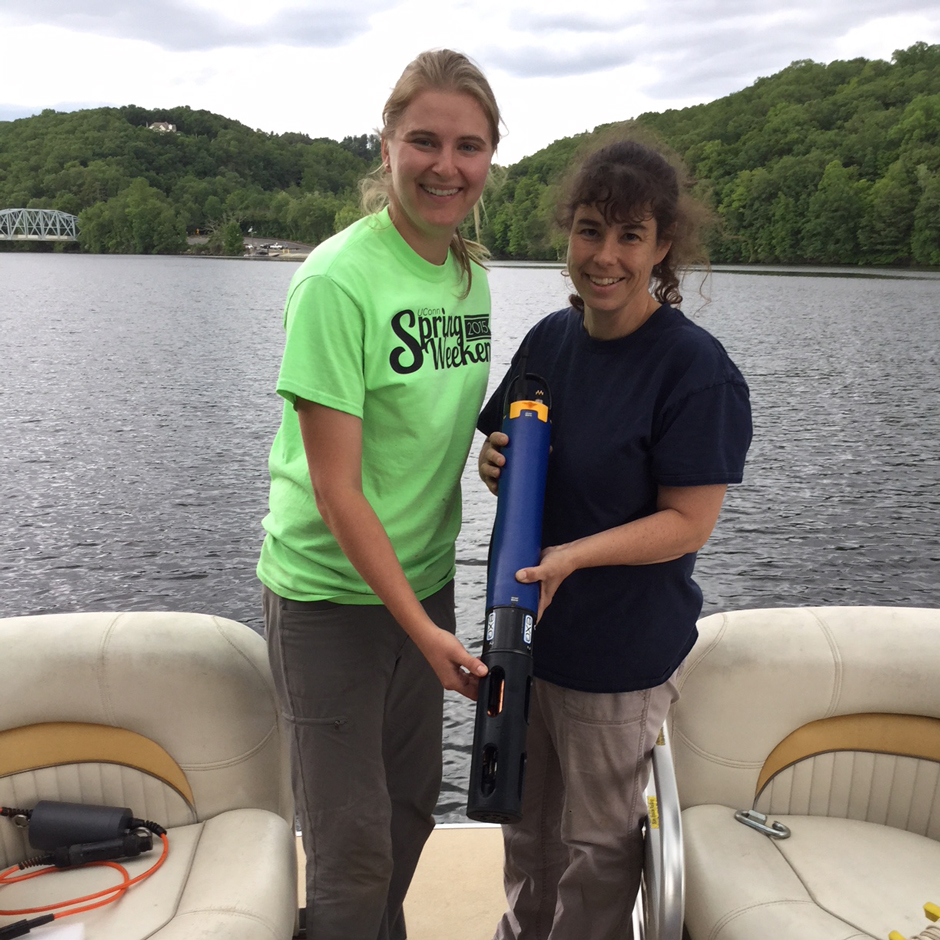
FOTL members Kendra Kilson and Rebekah White show off the YSI EXO2 sonde. (Credit: Jen Klug/Fairfield University)
Real-Time Systems and Discrete Sampling
Technical issues, time, and a small team are the greatest challenges to monitoring Lake Lillinonah. The partnership between Klug’s work and FOTL has helped resolve some of these challenges. For example, White’s role at FOTL centers around resolving such technical issues.
“I am employed by Friends of the Lake to prepare the equipment for deployment and deploy it, monthly calibration, cleaning and maintenance, troubleshooting, and winter removal and storage,” explains White.
White also collects seasonal weekly sampling at five sites on the lake using a YSI ProDSS along with manual water sample collections. Bollard takes on a lot of the outreach and advocacy initiatives, building off of the data Klug and White collect to represent lake needs to stakeholders.
Real-time monitoring systems have also changed the way Lake Lillinonah is monitored. A CB-450 data buoy equipped with a YSI EXO2 sonde, temperature string, and an additional Dissolved Oxygen (DO) sensor at the bottom of the string collects vital data that support future research efforts and immediate protections for the lake.
Because algal blooms and hypoxia are the main concerns for the lake, the sonde is equipped with temperature, DO, pH, and total algae sensors, all of which monitor the parameters most associated with harmful algal blooms and their impacts on aquatic systems.
Since the climate also has a bearing on lake conditions, the buoy is equipped with an Airmar 200WX, while the on-shore system houses a Vaisala multi-parameter weather station. A water level sensor is also deployed on the lake as the water level determines whether certain recreational activities are possible. Since water levels impact the public, the data is available online for anyone wishing to view current lake conditions.
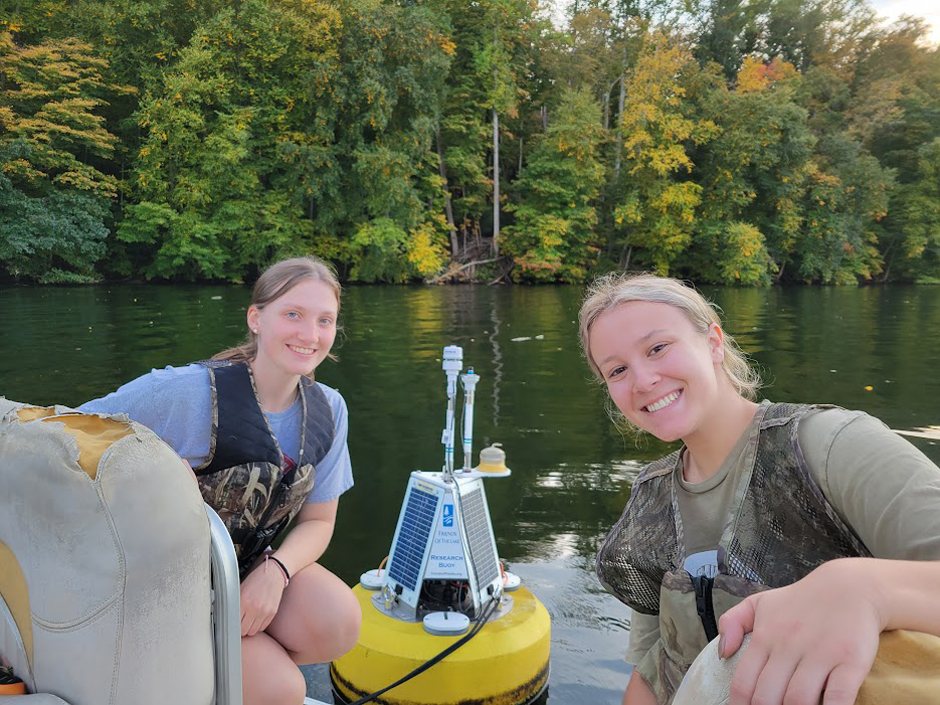
Fairfield University biology majors, Olivia Beaudoin and Emma Kramer (left) pose with the buoy. (Credit: Jen Klug/Fairfield University)
“Numerous people can get a glimpse of the lake without the need to travel. Those who recreate on the lake can access data through our website to help them prepare for their trip out,” elaborates White.
FOTL works with other universities and organizations to monitor the lake and improve water quality including the Lake Lillinonah Authority. Additionally, FOTL participates in Dr. Edwin Wong’s Cyanomonitoring Program at Western CT State University, supplying water samples for microcystin analysis. The state of Connecticut’s Department of Energy and Environmental Protection is also currently using some of FOTL’s data to assist in developing a Total Maximum Daily Load (TMDL) for the reservoir system.
Bollard explains, “We quickly realized that FOTL had to fill in the gap of monitoring and collecting data. Budget constraints at the State level created a shortage of oversight. Our focus is to provide scientific data to local and state agencies which illustrates the need for improvements in order to keep awareness on policies which affect our water quality.”
The collaboration with FOTL and implementation of NexSens real-time monitoring equipment reshaped how the lake is studied. Early on, Lake Lillinonah was only sampled once a month, which provided some data but lacked detail for such a dynamic system. The buoy helps track chemical and physical conditions in real-time, collecting and updating data every 15 minutes.
“The buoy totally changed our understanding of the physical structure of the lake and how dynamic it really was. As an example, we can have some years where we don’t see hypoxia at all and years where the bottom is hypoxic for six weeks, which may not be long for some lakes, but it’s pretty long for Lillinonah,” states Klug.
The partnership has also changed how Klug teaches. Fairfield University biology students in her Freshwater Ecology course learn data analysis and scientific writing skills using Lillinonah data. Her undergraduate research students also answer questions about Lillinonah. Current students are studying how changes in the magnitude and timing of river input due to climate change affect nutrient concentration, water clarity, and hypoxia.
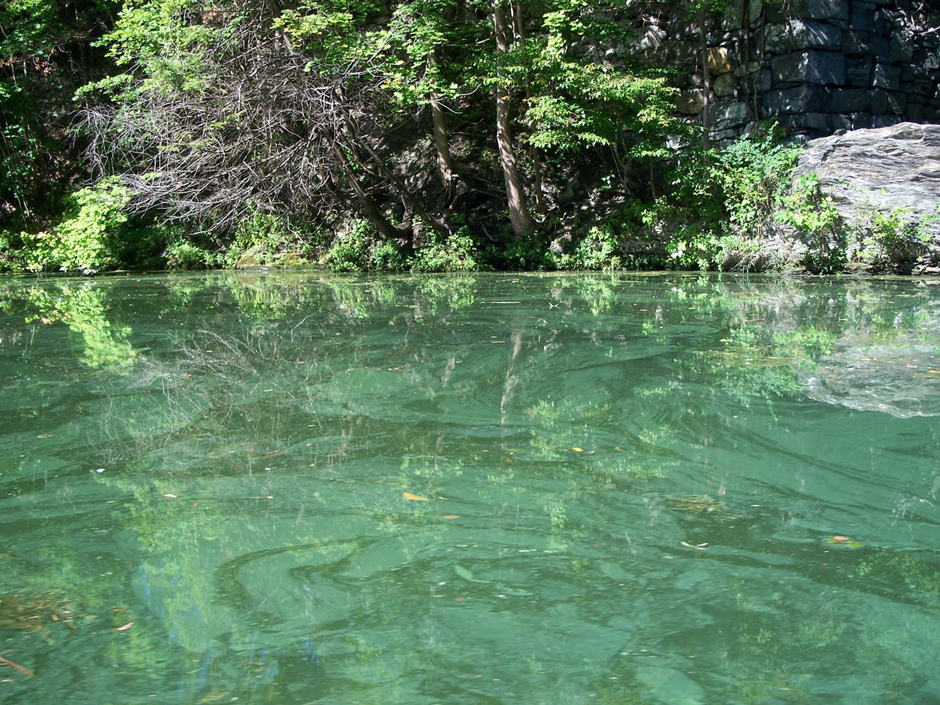
Surface algal bloom on Lake Lillinonah. (Credit: Tod Osier/Fairfield University)
Conclusion
According to Klug, the real-time data and FOTL’s sampling contributions have already been used to shape decisions surrounding the lake. While limnologists like Klug see the value of lakes like Lillinonah, it can be difficult to communicate that importance to others and discouraging when communities fail to rally behind the resource.
For that reason, working with FOTL has been particularly rewarding as they help bridge the space between research and the public. White explains, “Quality water quality data is a powerful tool used by Friends of the Lake to fulfil our mission of promoting positive change and to promote environmental conservation and protection of this beautiful natural resource.”
“I think one of the most rewarding parts is seeing how excited people get about being part of the greater lake science community,” begins Klug. “It’s really taken me down a road into environmental sociology, to some extent. And that’s certainly not something I would have ever expected as a graduate student. So, it’s been super rewarding just working with people who really, really care about lakes,” she continues.
It’s the job of FOTL to work with the surrounding towns to help develop this network of lake neighbors—and playing a pinnacle role in creating these relationships is one of the most rewarding parts of White’s work.
“Friends of the Lake—their advocacy is critical—they’ve used the data to talk to the Department of Energy and Environmental Protection, and they’ve leveraged the data that we’ve collected to advocate for reductions in nutrient loading,” explains Klug.
Bollard adds, “Many times progress can feel very slow when working with policy changes. However, the greatest satisfaction is to witness the improvement over time and realizing that when a body of water has ambassadors, change and improvements can happen.”
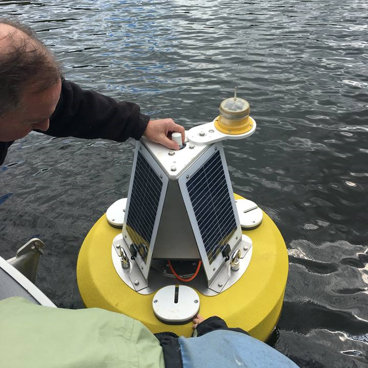
FOTL member Scott Conant steadies the buoy. (Credit: Greg Bollard/Friends of the Lake)




0 comments